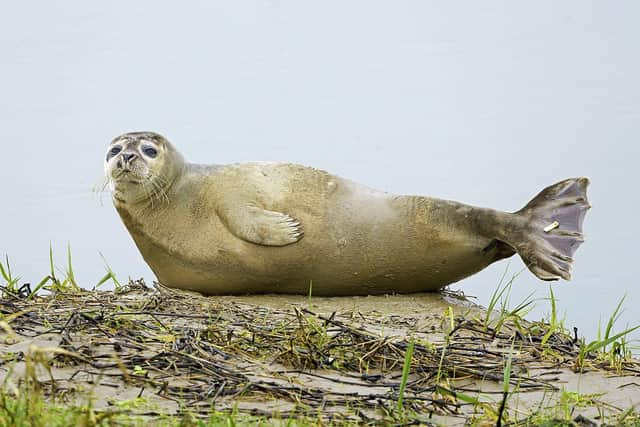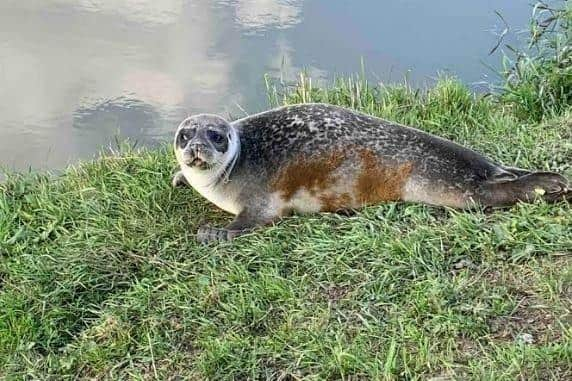Sussex seal update: What has happened to our Belgian friend?
and live on Freeview channel 276
As Sussex regional co-ordinator for the Sea Watch Foundation, Stephen has been keeping a close eye on our two semi-resident seals in the River Adur.
Rivier, named by Stephen after the Dutch word for river having discovered it had come from Belgium, and Bramble have been been spotted many times by people using the river or walking alongside.
Advertisement
Hide AdAdvertisement
Hide AdStephen said: “Now that lockdown is easing, it seems it’s not just people that are on the move, as one of the two semi-resident seals that have been enjoying the River Adur since last summer may be on the move.


“While the seal named Bramble is regularly seen travelling up and down the River Adur to Shoreham and the sea, Rivier has not been seen for a few weeks.”
Stephen is the Sussex county recorder for sea mammals and has been tracking the seals’ movements since they took up residence in the River Adur last summer.
Rivier’s origins were traced using a special ID flipper tag and Stephen discovered this seal was originally rescued and released in Belgium.
Advertisement
Hide AdAdvertisement
Hide AdStephen said: “The information gained from tracking these two seals is a valuable part of my ongoing study since 1991. Part of my study has been to build up a photographic ID of each of the two seals, so the movements of each individual seal can be recorded.


“Since last summer, I have been analysing photographs sent to me by the public, including Herald readers, and logging all the data collected of their whereabouts and how they interact with the river.
“The seal may have just decided to move on - we have had other resident seals before and one day they just swim off and never return.
“However, it may be due to disturbance, as seals are particularly vulnerable to stress when hauled out on the riverbank or a beach.
Advertisement
Hide AdAdvertisement
Hide Ad“People mistakenly feel the seal is ‘happy’ if it doesn’t jump in the water and swim away but actually the fact that the seal is looking at you is often a sign of increased vigilance and that the seal is being stressed.”
Seals are protected and there is also a code of conduct to reduce disturbance. Normally, it is recommended people do not to approach a seal any closer than 100m and then to only stay for 10 minutes.
This is, of course, not possible on the River Adur, where just the normal human activity of walkers, etc., may inadvertently disturb the seal.
Stephen pointed out most people are very respectful once they know a seal is around but many walkers do not expect to suddenly encounter a seal.
Advertisement
Hide AdAdvertisement
Hide AdStephen said: “It’s essential that seals can haul out undisturbed as this is when they rest, digest their food and replenish the energy used when swimming and feeding.
“Signs of disturbance include restlessness, fast head turning, focused looking and even flipper waving, the latter a warning signal that you are too close.”
Stephen is keen to receive information about any seals spotted in Sussex by the public, including where the seal was spotted, the day, time, if the seal was swimming or hauled out.
He would also like to receive photographs as they are essential for confirming the species of seal, provide a visual record of where it was seen and also help discover if Rivier is still in the River Adur, or if she has moved to another Sussex river.
Advertisement
Hide AdAdvertisement
Hide AdStephen added: “The more information you can provide, the better. Close up photographs of the head and body are very useful for recording any individuals by the unique markings, as there may also be other traveling seals in the area.”
People can contact Stephen and send sightings and photographs to the project email address at [email protected]
Stephen would like to thank the many people who have forwarded seal sightings and photographs since last summer, as they have provided essential information vital to his study.
Stephen is hoping to expand the project to include a larger element of citizen science, as, he says, one thing that lockdown has shown is that there are a lot of people out there who are passionate about seals.